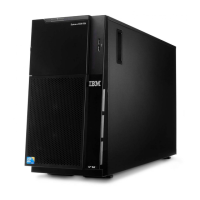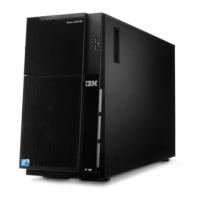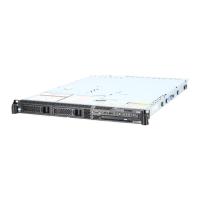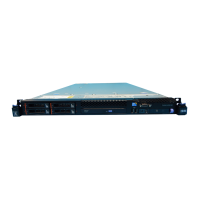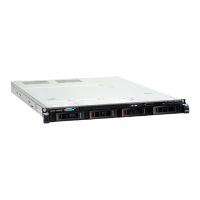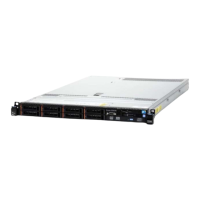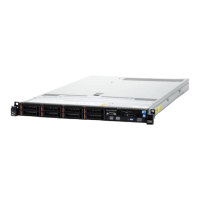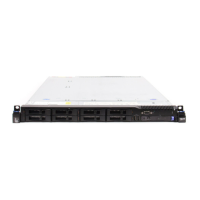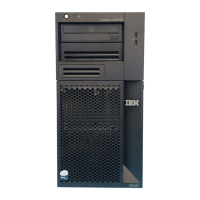Memory problems
v Follow the suggested actions in the order in which they are listed in the Action column until the problem
is solved.
v See the Problem Determination and Service Guide on the IBM System x Documentation CD to determine which
components are customer replaceable units (CRU) and which components are field replaceable units
(FRU).
v If an action step is preceded by “(Trained service technician only),” that step must be performed only by a
trained service technician.
Symptom Action
The amount of system memory
that is displayed is less than the
amount of installed physical
memory.
1. Make sure that:
v No error LEDs are lit on the operator information panel or on the DIMM.
v Memory mirroring does not account for the discrepancy.
v The memory modules are seated correctly.
v You have installed the correct type of memory.
v If you changed the memory, you updated the memory configuration in the
Configuration/Setup Utility program.
v All banks of memory are enabled. The server might have automatically
disabled a memory bank when it detected a problem, or a memory bank
might have been manually disabled.
2.
Check the POST error log for error message 289:
v If a DIMM was disabled by a system-management interrupt (SMI), replace
the DIMM.
v If a DIMM was disabled by the user or by POST, run the Configuration/Setup
Utility program and enable the DIMM.
3.
Make sure that there is no memory mismatch when the server is at the
minimum memory configuration.
4. Add one pair of DIMMs at a time, making sure that the DIMMs in each pair are
matching.
5. Reseat the DIMMs.
6. Replace the DIMMs, one at a time, restarting the server each time.
Multiple rows of DIMMs in a
branch are identified as failing.
1. Reseat the DIMMs; then, restart the server.
2. Replace the lowest-numbered pair of DIMMs with an identical known good pair
of DIMMs; then, restart the server. Repeat as necessary. If the failures continue
after all identified pairs are replaced, go to 4.
3. Return the removed DIMMs, one pair at a time, to their original connectors,
restarting the server after each pair, until pair fails. Replace each DIMM in the
failed pair with an identical known good DIMM, restarting the server after each
DIMM. Replace the failed DIMM. Repeat step 3 until you have tested all
removed DIMMs.
4. (Trained service technician only) Replace the system board.
Chapter 5. Solving problems 81
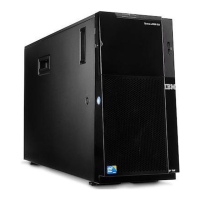
